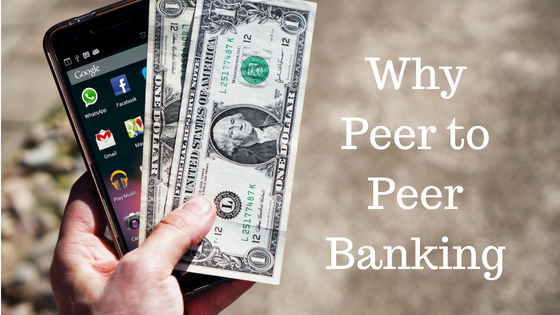What Do You Need To Know About Peer To Peer Lending?
Through peer to peer lending, one can lend money to businesses or individuals. The P2P lender receives interest and gets his/her money back when the loan is repaid. A P2P lending platform is like a marketplace which brings together businesses or people who want to get investment opportunities by lending money to those who require a loan.
Through this process, borrowers can get abundant funding opportunities without having the need to go to a bank.
How to initiate the peer to peer lending process?
There are three main steps which can get you started with peer to peer lending:
- You have to open an account with a P2P lending website and then pay the required amount of money through your debit card. You can also do a direct bank transfer.
- You have the option to choose the interest rate which you would like to receive or you can also agree with the rate that is on offer. The returns would depend on the risk profile of the borrower.
- You can then, lend the required amount of money for a fixed time period. For instance, you can lend the money for three to five years and then, you might have to pay a fee to lend money i.e. 1% on the loan.
Sometimes, there are ‘auto bid’ features available, which means that you can set a probable limit on how much money you want to lend for each business and also on the lowest interest rate which you are prepared to lend for.
It has been noted that P2P lending platforms do not allow the person to fund more than an evident percentage of a single borrower’s necessity in order to limit the exposure to risk.
Once there is an agreement with the lender and borrower about the offer, they enter into a detailed loan contract. Money from each lender goes into an escrow account which is held by the platform and then the loan is distributed after the required minimum amount has been collected and the post-dated cheques towards the EMI payment have been given by the borrower.
The borrowers are charged with a penal interest rate if the EMI’s are delayed or not paid. In the case of a default, the P2P lender is assisted with a loan recovery. Since the P2P platforms are providing these services, they charge the borrowers with a fee and sometimes they also charge the lenders. Before the loan is provided to the borrower, the lender sees the vital information which the borrower provides on the P2P lending platform. This includes the reasons for requirement of the loan, the financial history, other relevant information, etc.
The role of tax in P2P lending
The interest which is earned from P2P lending is taxable but is paid without the tax being taken off. This implies that if you are a taxpayer, you need to intimate HM Revenue and the Customs about the received interest rate. Then, you need to pay tax on all the receivable interest even if you did not receive the full amount because of the default. There can also be an Innovative Finance ISA received, which means that the P2P loans can be held in the individual savings account (ISA). This implicates that you can receive the interest from P2P loans without paying any tax.
It has been noted on a global basis that P2P lending is becoming an emerging platform or as an essential source of cheaper and simpler fund-raising opportunity for businesses or people. It has been stated according to the Peer-to-Peer Finance Association that global P2P lending has grown from £2.2 million in 2012 to £4.4 billion in 2015.
In India, the size of this industry is believed to be small since the lenders do not have an ample physical presence or big workforce and it is for this reason that they are able to operate at a lower cost. When seen from a lenders perspective, the attraction of it lies in the opportunity to earn the highest amount of interest rate.
When there is no collateral in your hand and if you want to raise money or funds immediately for business or personal reasons, a P2P lending platform is your best bet. It should be noted that if the borrower has smaller creditworthiness, they may not be able to get a loan because of their poor credit record.
It can be said on a stronger notion that the advanced technology combined with the P2P lending market has attracted many investors. This makes these platforms one of the growing divisions in India.It is expected by 2020 that the peer to peer lending market in India is said to reach Rs. 30,000 crore. This implies that peer to peer lending in India is transparent and organized and also showcases many opportunities to the public.


0 comments